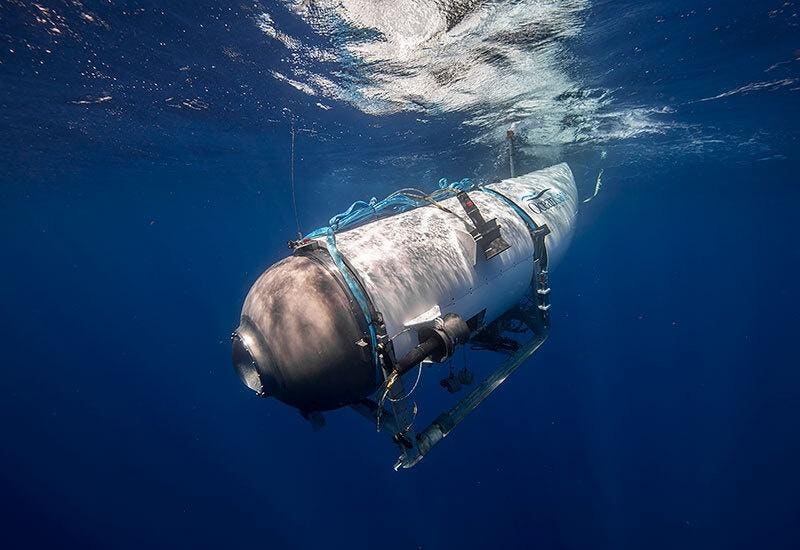The fateful voyage of the submersible Titan offers a highly public account of a doomed, yet undeniably seductive, adventure. But beyond the gripping details of the heroic rescue efforts lie larger questions about responsible risk analysis, and the social costs of unrestrained and unregulated innovation and exploration.
Is there a distinction between audacity and recklessness that needs to be confronted by those who knowingly pursue risk? The tragic fate of the Titan may prompt those who make decisions on the most extreme of ventures or innovations to look more closely at their ultimate risk and reward-not only to themselves, but to their organizations, their constituents and ultimately to society.
Much of the appeal of the Titan saga lies in the public’s fascination with exotic (and quixotic) quests. We are, after all, a nation built on the pioneer spirit, as reflected through the years from the Columbus voyage to the construction of the Mormon Trail to the flight of Apollo 11. As Charles Lindbergh famously noted, “What kind of man would live where there is no daring? I don’t believe in taking foolish chances, but nothing can be accomplished without taking any chance at all.”
The Titan took that chance. What could be more daring than a descent 13,000 feet below the surface of the ocean to visit the site of one of history’s most compelling and mysterious crypts? Yet it may remain forever unclear whether that was, as Col. Lindbergh would have described, a foolish chance.
Indeed, the Titan’s backstory suggests that the excitement of the adventure may not have been supported by a concomitant thoroughness of preparation. Media reports speak of the decision by OceanGate (Titan’s owner) to eschew an independent safety verification, feeling that it unduly restricted innovation. This decision reportedly prompted a warning on potential catastrophic failure from the Marine Technology Society.
News reports also suggest a variety of employee complaints as well as product flaws, ranging from ‘a roof handle bought at a camping store to a videogame controller that pilots the vessel.’ Yet others praised the OceanGate CEO, Stockton Rush, for his detail-oriented approach to the submersible and its voyages. Indeed, the Titan had previously made several successful visits to the Titanic wreckage site.
Yet perhaps the ultimate risk to the Titan was the power and majesty of the ocean’s crushing depths. While the submersible travel industry has been in existence for a number of years, subsequent investigations may conclude that as to the Titan, the ocean proved a “risk bridge” too far to cross. And then there’s the more existential concept of a sunken vessel; a Twilight Zone force that the estimable Rod Serling envisioned fifty years ago.
The fate of the Titan should prompt conversations among those responsible for innovations and ventures that offer extremes in terms of both risk and reward. That conversation is not limited to the exotic travel industry, which remains both popular and credible within its niche. It would extend to any business pursuing “bet the ranch” type transactions which carry enormous implications for the company, its workforce, its vendors and the communities in which it is located.
And it would certainly extend to the field of artificial intelligence, which offers both breathtaking advances in science and commerce, and potentially staggering risks to society. As Sam Altman, CEO of the company that created AI tools such as ChatGPT noted, “my worst fears are that we cause significant, we, the field, the technology, the industry cause significant harm to the world. I think that could happen in a lot of different ways…I think if this technology goes wrong, it can go quite wrong.”
It’s a conversation that could be driven by Donald Rumsfeld’s famous risk analysis formula: (i) the “known knowns;” i.e., those risks that are well known to leadership; (ii) the “known unknowns;” i.e., those risks that leadership knows that it does not know; and (iii) the “unknown unknowns;” i.e., those risks that leadership doesn’t know it doesn’t know (in other words, risks of which no reasonable person could be expected to be aware and may not yet exist).
Can the organization adequately address each level of risk? That’s the question that needs to be answered.
The ultimate lesson from the Titan tragedy is not that creativity should be muffled, boldness should be stifled, or innovation should be limited. Not by a longshot. We remain a people who set goals and objectives “not because they are easy, but because they are hard.”
Rather, the lesson is to be honest about those goals and objectives, and thoughtful in asking whether their related risks-no matter how extreme-can be managed without too great of a cost.
Read the full article here










